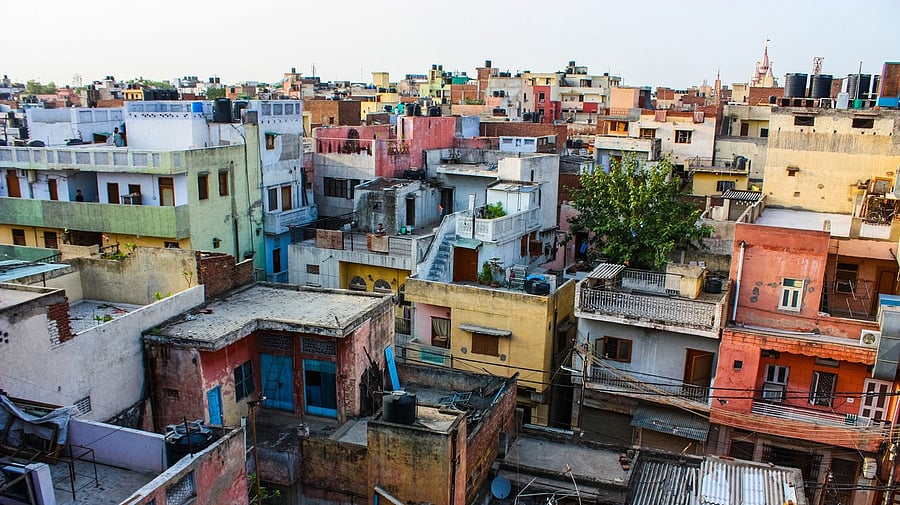
Images of buildings in Bengaluru for representational purposes.
Credit: iStock photo
Bengaluru: High-rise buildings with a minimum of 15 floors are likely to come up in some of Bengaluru’s most-sensitive green zones, as the state government has offered sweeping relaxations in building norms to attract private bidders for the proposed Rs 17,800-crore tunnel road between Hebbal and Silk Board Junction.
According to tender documents, the government will also provide six acres of land in five prime locations, where the selected bidder can use an unprecedented Floor Space Index (FSI) of 5, allowing five times more built-up area than what is currently allowed across Bengaluru.
While the government wants to make the 16.75-km “twin-tube underground road” financially viable — a project that demands 60 per cent private investment, mobility experts believe the relaxations will encourage more vehicles along the corridor, leading to further traffic congestion.
Hebbal, Race Course, Palace Grounds, Lalbagh and Silk Board Junction are the five places, also named as intermodal hubs, where commercial towers will come up. While four sites are government properties, the fifth belongs to a private entity that the state plans to acquire.
Together, they cover 25,000 square metres of land that will be turned into dense commercial zones, overriding existing restrictions as they are marked as “green” or “sensitive”.
“The land for these hubs shall be provided to the concessionaire by the government,” the tender document notes, adding that all assets must be handed back to the state on an “as-is, where-is basis” after the concession period ends, which could be as long as 44 years.
The tender document also states that the concessionaire will be granted 100 per cent rights over ancillary revenues from these intermodal hubs.
Other than commercial activities, the project allows toll collection from passenger vehicles and buses for 34 years, extendable by another decade if revenues fall short. Advertisement rights are also part of the revenue package.
‘Unprecedent relaxation’
At present, Bengaluru permits a maximum FSI of 3.25 along 100 feet roads. The last major attempt to raise it to four for areas around metro stations in 2007 was withdrawn following public backlash. Even under the Transferable Development Rights (TDR) scheme, only a 60 per cent additional FAR can be loaded.
The new relaxation — FSI 5 — therefore marks a drastic departure from city planning norms and will require an amendment to the Revised Master Plan (RMP).
Another tender clause says the five intermodal hubs, which are also the shaft locations, will have foundations designed to support 5 basement + ground + 15-storey commercial or industrial buildings. Builders familiar with the terms said such relaxations could allow towers up to 40 floors on plots as small as 5,000 sq metres.
Officials from Bengaluru Smart Infrastructure Ltd, which is executing the project, insisted the commercial component was optional. “The bidder is expected to return the building after the concession period. We have kept it optional because bidders may prefer low-rise structures on the available land rather than investing in high-rises as its a leased property,” a senior official said.
Satya Arikutharam, an independent consultant, called the plan “perverse mobility planning” rooted in flawed priorities. “The structure of the bid ensures that developers must maximise real estate revenue to offer lower toll recovery values and improve their winning chances,” he said, adding the proposal will lead to unwanted real estate development. “The tunnel road itself is not a sustainable mobility solution. Although presented as a traffic congestion relief project, it will generate more traffic by allowing new commercial activities.”